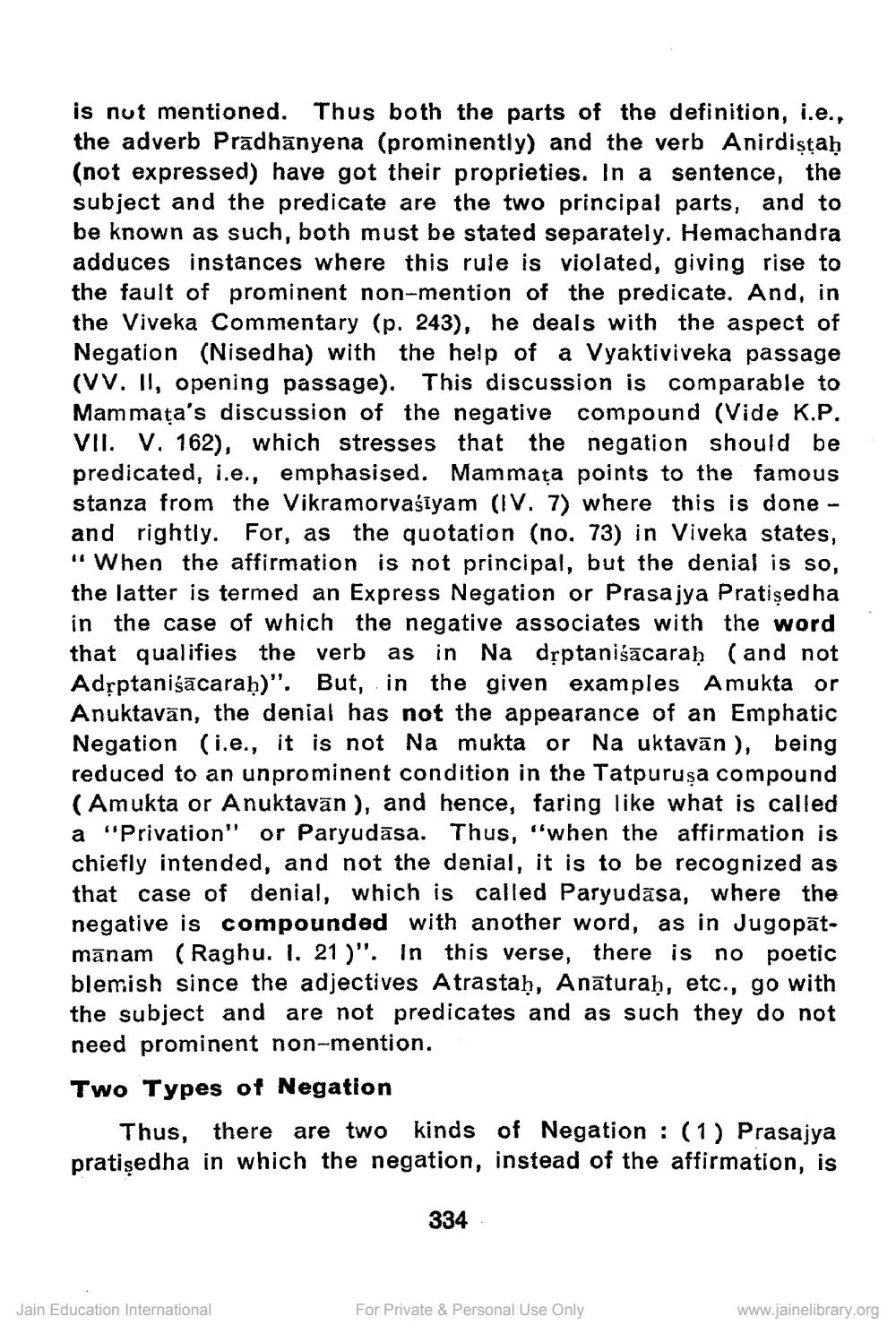________________
is not mentioned. Thus both the parts of the definition, i.e., the adverb Pradhānyena (prominently) and the verb Anirdiṣṭaḥ (not expressed) have got their proprieties. In a sentence, the subject and the predicate are the two principal parts, and to be known as such, both must be stated separately. Hemachandra adduces instances where this rule is violated, giving rise to the fault of prominent non-mention of the predicate. And, in the Viveka Commentary (p. 243), he deals with the aspect of Negation (Nised ha) with the help of a Vyaktiviveka passage (VV. II, opening passage). This discussion is comparable to Mammata's discussion of the negative compound (Vide K.P. VII. V. 162), which stresses that the negation should be predicated, i.e., emphasised. Mammata points to the famous stanza from the Vikramorvaśīyam (IV. 7) where this is done - and rightly. For, as the quotation (no. 73) in Viveka states, "When the affirmation is not principal, but the denial is so, the latter is termed an Express Negation or Prasajya Pratiṣedha in the case of which the negative associates with the word that qualifies the verb as in Na dṛptaniśacaraḥ (and not Adṛptaniśācaraḥ)". But, in the given examples Amukta or Anuktavan, the denial has not the appearance of an Emphatic Negation (i.e., it is not Na mukta or Na uktavān), being reduced to an unprominent condition in the Tatpurușa compound (Amukta or Anuktavān), and hence, faring like what is called a "Privation" or Paryudāsa. Thus, "when the affirmation is chiefly intended, and not the denial, it is to be recognized as that case of denial, which is called Paryudāsa, where the negative is compounded with another word, as in Jugopatmanam (Raghu. I. 21)". In this verse, there is no poetic blemish since the adjectives Atrastaḥ, Anaturaḥ, etc., go with the subject and are not predicates and as such they do not need prominent non-mention.
Two Types of Negation
Thus, there are two kinds of Negation (1) Prasajya pratisedha in which the negation, instead of the affirmation, is
Jain Education International
334
For Private & Personal Use Only
www.jainelibrary.org




